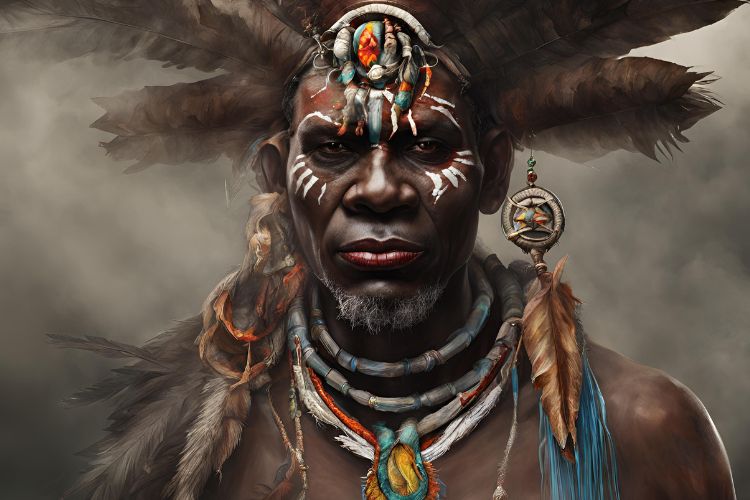Witch doctors, also known as traditional healers or shamans, have been an integral part of many cultures around the world for centuries. These individuals are believed to possess supernatural abilities to heal the sick, communicate with spirits, and provide guidance to those seeking answers. However, there are many misconceptions and stereotypes surrounding witch doctors that often lead to misunderstandings and fear. In this article, we will debunk some of the common misconceptions about witch doctors and shed light on the truths behind these mysterious figures.
The Myth of Dark Magic
One of the most pervasive misconceptions about witch doctors is the belief that they practice dark magic and engage in harmful rituals. This misconception is largely fueled by Hollywood movies and sensationalized media portrayals of witch doctors as evil sorcerers who use their powers for malevolent purposes. In reality, the majority of witch doctors are healers who use their knowledge of traditional medicine and spiritual practices to help those in need.
Witch doctors often work with herbs, plants, and natural remedies to treat various ailments, and their practices are rooted in centuries-old traditions that emphasize healing and spiritual balance. While there may be some individuals who claim to practice dark magic, these are outliers and do not represent the vast majority of witch doctors who are dedicated to using their powers for the good of their communities.
The Stereotype of Witch Doctors as Charlatans
Another common misconception about witch doctors is that they are charlatans who exploit the beliefs and vulnerabilities of others for personal gain. This stereotype is based on the assumption that witch doctors are nothing more than frauds who use tricks and deception to deceive their clients. While it is true that there have been instances of individuals posing as witch doctors in order to scam people, it is important to recognize that these individuals are not representative of all traditional healers.
In many cultures, witch doctors are highly respected members of their communities who undergo rigorous training and initiation rituals in order to become healers. They often serve as spiritual leaders and guides, providing counsel and support to those in need. While there may be some individuals who take advantage of their position for personal gain, the majority of witch doctors are sincere in their desire to help others and are dedicated to using their abilities for positive purposes.
The Misconception of Witch Doctors as Primitive or Backward
Another misconception about witch doctors is the belief that they are primitive or backward individuals who hold superstitious beliefs and practices. This stereotype is rooted in colonial attitudes that dismiss indigenous knowledge and cultural practices as inferior or irrational. In reality, witch doctors often have a deep understanding of the natural world and possess expert knowledge of the healing properties of plants and herbs.
Many traditional healers undergo years of apprenticeship and study under experienced mentors in order to learn the intricacies of traditional healing practices. They may also incorporate modern medical knowledge and techniques into their work in order to provide comprehensive care to their patients. Rather than being primitive or backward, witch doctors are often highly skilled practitioners who play an essential role in maintaining the health and well-being of their communities.
The Myth of Witch Doctors as Sorcerers
One of the most enduring misconceptions about witch doctors is the belief that they possess supernatural powers that defy explanation. This myth is perpetuated by stories of witch doctors performing seemingly miraculous feats, such as communicating with spirits, casting spells, or predicting the future. While it is true that witch doctors may engage in ritual practices that are not easily understood by Western standards, it is important to remember that their abilities are rooted in cultural traditions and spiritual beliefs.
Witch doctors often use symbols, chants, and rituals to create a sacred space in which healing and communication with the spiritual realm can take place. These practices are based on a deep understanding of the interconnectedness of all living beings and the belief that the physical and spiritual worlds are closely intertwined. While Western science may not be able to explain all of the practices of witch doctors, it is important to approach these traditions with an open mind and a willingness to learn from different cultural perspectives.
Debunking Misconceptions and Embracing Cultural Diversity
In conclusion, witch doctors are complex and multi-faceted individuals who play a vital role in the spiritual and physical health of their communities. By debunking common misconceptions and stereotypes about witch doctors, we can begin to appreciate the richness and diversity of traditional healing practices around the world. Rather than dismissing these practices as primitive or irrational, we should approach them with respect and curiosity, recognizing the value that they hold for those who seek healing and guidance.
It is important to remember that cultural beliefs and practices are not static or monolithic, but are constantly evolving and adapting to changing circumstances. By engaging with different cultures and traditions with an open mind and a spirit of inquiry, we can gain a deeper understanding of the world around us and cultivate a greater sense of empathy and appreciation for the diversity of human experience. Let us seek to dispel myths and misconceptions about witch doctors and embrace the beauty and complexity of traditional healing practices.

